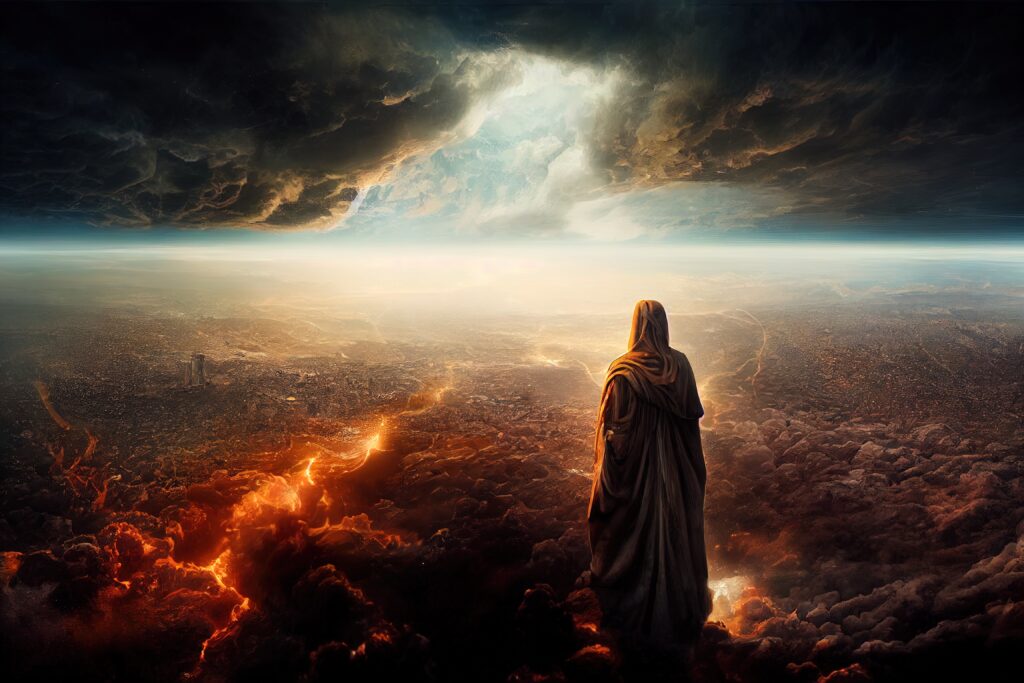
Philadelphia
“Write this letter to the angel of the church in Philadelphia. This is the message from the one who is holy and true, the one who has the key of David. What he opens, no one can close; and what he closes, no one can open: “I know all the things you do, and I have opened a door for you that no one can close. You have little strength, yet you obeyed my word and did not deny me.” – Revelation 3:7-8 NLT
Philadelphia was about 40kms south of Sardis. It was strategically located on the pass through which all the mail, trade, and commerce passed to the central and eastern regions of Lydia. It was built in 189 BC and named after Attalus Philadelphus whose brother was the king of Lydia. It was nearly destroyed by earthquakes several times. The Turks possessed it in 1392 AD. It is still a town of considerable size, called Allahshehr, “the city of Allah (God).” This church, along with the church at Smyrna, receives no rebuke, only praise.
The name “Philadelphia” means “brotherly love. Brotherly love is a wonderful thing that brings profound joy to both the giver and the receiver. This was the era of revival and missionary activity that thrust Christianity onto the world stage. This occurred from the late1700s to the 1840s.
Jesus declares Himself to be the one who holds the key of David. He has the authority to open and to shut. This makes Him the one who controls entrance to the royal palace, the place where the authority of the kingdom is concentrated.
The language of this text is based on Isa 22:22. Judah was under attack by Sennacherib of Assyria. The leaders of the nation had gathered weapons, shored up the city walls, and secured the water supply of the city. But God criticized their work because in all their preparations they never asked Him for help. Instead, when they realized that their situation was hopeless, they decided to party and enjoy what few resources they had left before death overtook them (Isa 22:1-13).
Shebna, who was in charge of the royal palace (think chief of staff), proved to be as materialistic as the people, commissioning a spectacular grave to be carved out for himself in a prominent place (Isa 22:15-16). The Lord deposed him from his position and gave the key of David to Eliakim instead (Isa 22:17-21). From then on Eliakim would be the one with the authority to open and shut the doors of the kingdom (Isa 22:22).
As in Smyrna, the members of the church at Philadelphia experienced conflict in relation to the local synagogue. It is likely that the Christians of Philadelphia were dis-fellowshipped from the synagogue and may have questioned whether they had lost their place in heaven as well. Historically, this is also a time when Christians were dis-fellowshipped as Protestantism fragmented, e.g. the expulsion of the Wesley’s from the Anglican fellowship. Jesus assures them that He, and He alone, decides who enters the temple of God. In a relationship with Him, their position is secure.
The letter to Philadelphia has a unique feature. Jesus does not just analyse the church’s past and offer a remedy, He describes what He is doing for them in the present. He has placed before them an open door that no one can shut.
What is this door and why does Jesus offer it and hold it open? Commentators have three main suggestions in answer to this question.
1) Jesus is the door. As in John 10 Jesus is the one who guards the entrance to the church. Access to Jesus cannot be denied to His faithful Philadelphians.
2) A door of missionary opportunity. Jesus promises them that their efforts to evangelize the lost would be successful.
3) The door of heavenly knowledge. If this is Jesus’ intention, it would be in anticipation of Rev 4:1, where there is a door standing open in heavenly places concerning the things received by John in the book of Revelation.
Of these three I particularly like the first. Although others (the synagogue in Philadelphia) have excluded them from salvation, Someone far greater than their opponents welcomes them!
We should remind ourselves that the churches we have been studying provide a snap shot of the church from various perspectives. They were actual churches in place and time, but they are also types of churches through all time. They also characterised the dominant features of a specific church at a given time. Beyond that, they can also be understood to be a picture of the experience of individual Christians.
In chapter 1 they had been pictured as lampstands. The manorah was the only source of light in the temple. These lampstands were the light of the world down through the ages. Some of these churches demonstrate how difficult it is to hold up the light in a fallen world. The church of Philadelphia upheld that light powerfully and Jesus’ promise to them was sublime.
The protestant revival of the 18th and 19th centuries (The Philadelphian church) saw the greatest expansion of Christianity since Pentecost. But there was a dark side to this expansion. Missionary endeavours too often rode on the back of Western Colonial expansion. As a result, many non-Christians today see Christianity as a self-serving tool of Western imperialism rather than a humble, self-effacing movement that seeks to improve the lives of others. The gospel today must not rely on political and economic support for its success. (see 2Cor 12:9)

Very interesting to see how much God worked with His people then , and still the same working with us today.
Thank you Ross for the study , I am enjoying and learning more.
Elliette
Thank you Elliette